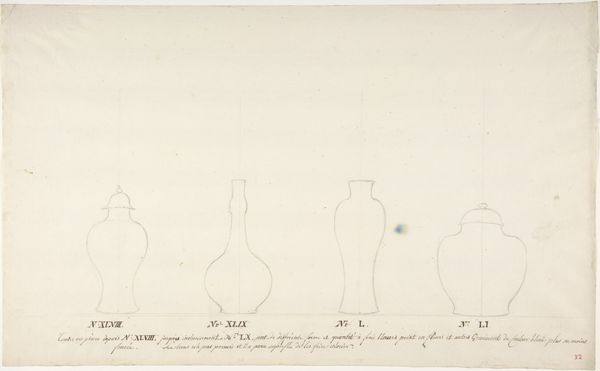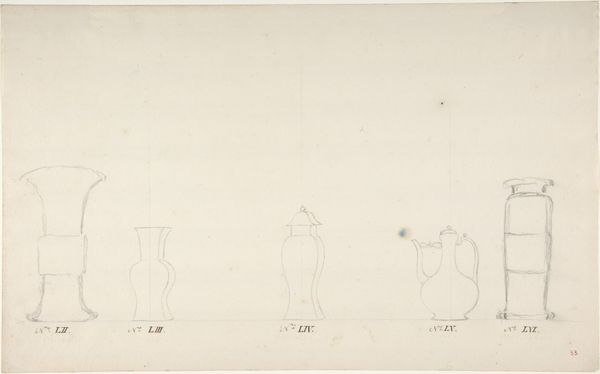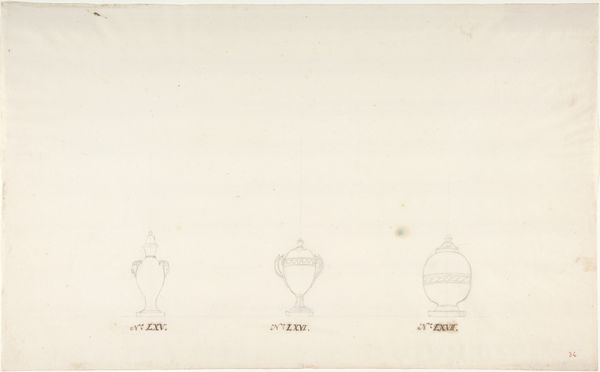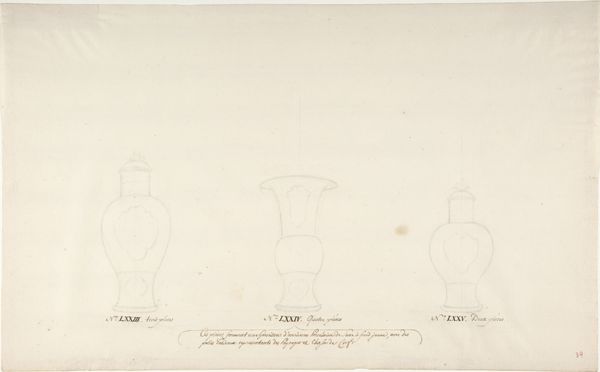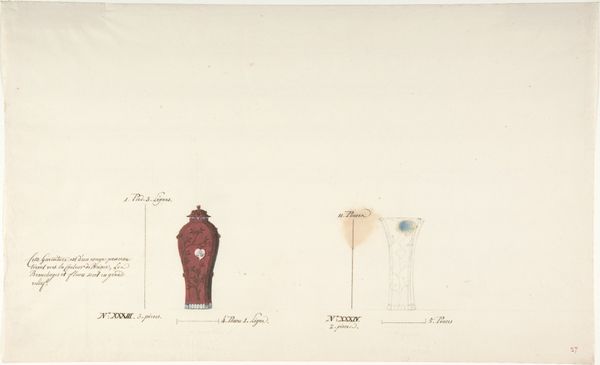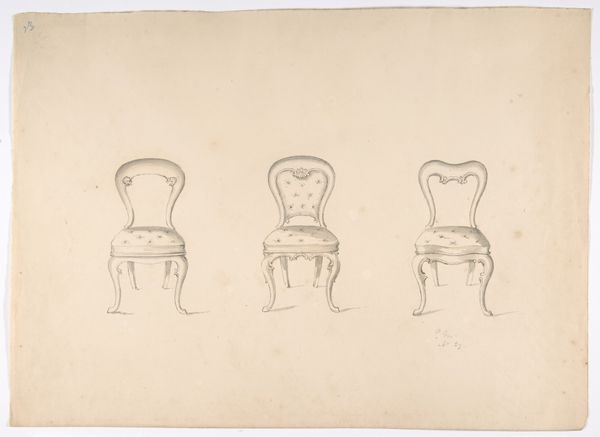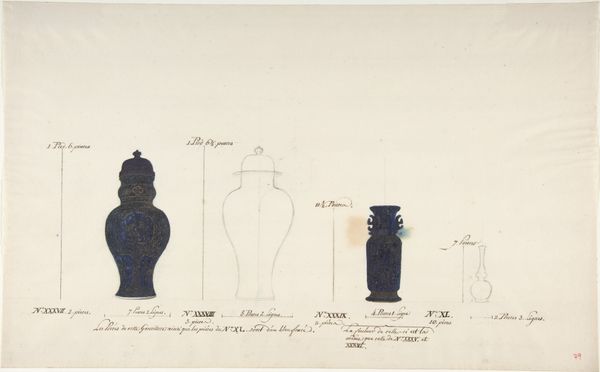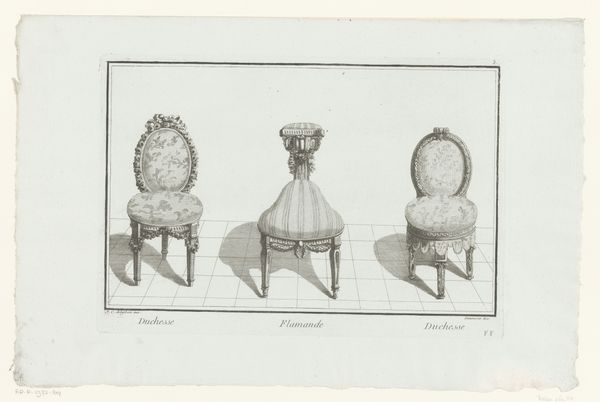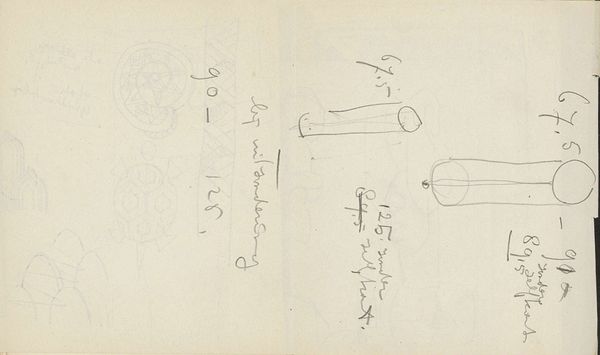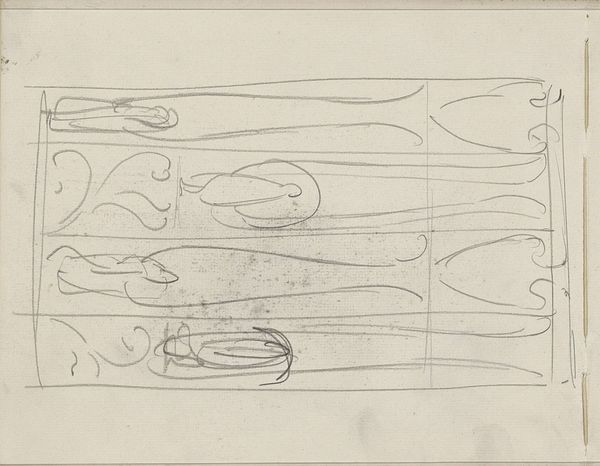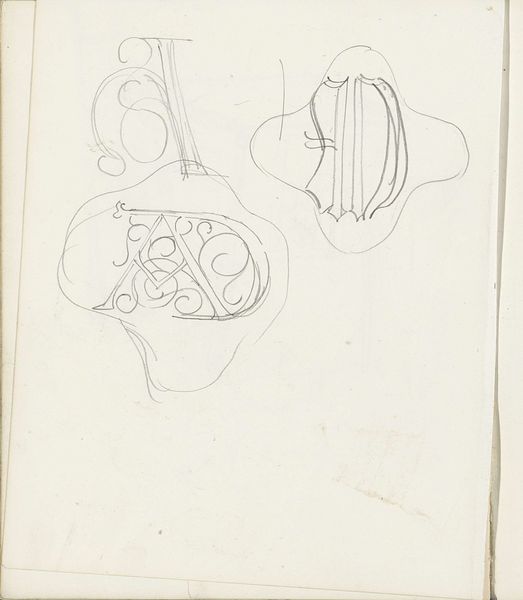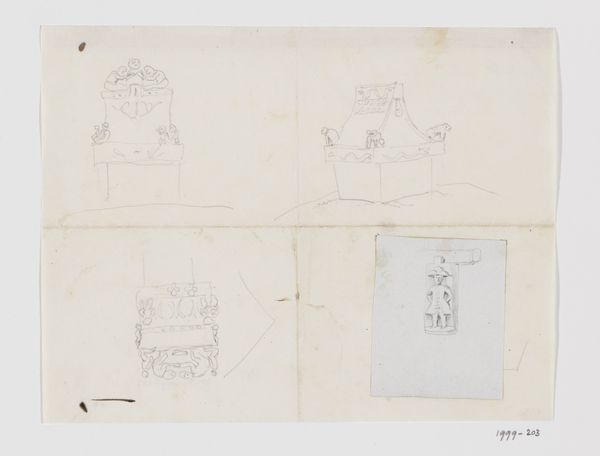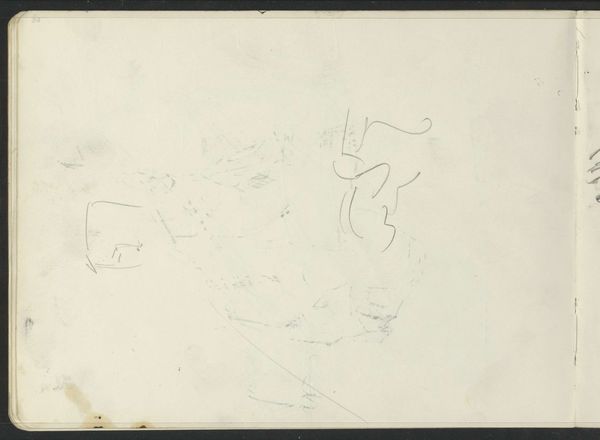
drawing, print, paper, pencil
#
drawing
# print
#
paper
#
geometric
#
pencil
Dimensions: 14 7/8 x 9 1/8 in. (37.8 x 23.2 cm)
Copyright: Public Domain
Curator: We are looking at "Design for Four Vases," created anonymously between 1765 and 1790. It’s a drawing rendered in pencil, print and paper. What’s your initial impression? Editor: My immediate thought is one of classical restraint. The stark, almost skeletal quality of the vases against the blank page feels very austere, as if they're specimens waiting to be classified. Curator: Indeed. It’s quite a minimalist approach to design, wouldn't you agree? I see these vase outlines primarily as explorations of geometric forms—each curve, line, and proportion is meticulously rendered to create harmonious, albeit simplified, shapes. There is something timeless to these four silhouttes, and I am compelled to view them as vessels ready to hold something sacred, in some respects. Editor: And perhaps, that very starkness underscores the historical moment of these designs. The late 18th century was a time of neoclassical revival, seeking inspiration from ancient Greece and Rome. Vases weren't merely functional; they were potent symbols of status, culture, and even political ideals. Curator: Good point. The numbered sequence reinforces the idea of them as elements within a larger compositional system, akin to architectural elevations. Also, by examining these drawings in isolation, we may abstract these common objects to evaluate pure forms. Editor: Exactly. One could imagine these designs appearing in a period catalogue or used by artisans. These designs played a role in constructing a visual language tied to aspiration and the culture of elite consumption, where design ideas circulated freely. The clean lines themselves might be promoting a certain visual aesthetic among upper-class circles. Curator: Ultimately, this unassuming sheet of paper offers a study in balance, proportion, and line, irrespective of any historical or functional association. These vases echo a mathematical harmony inherent in natural forms, too. Editor: I agree; considering the social and design context adds so much depth. I find it interesting how something so spare and diagrammatic can trigger thoughts about consumption and class. Curator: It's fascinating how such basic geometric underpinnings resonate to unlock layers of both aesthetic pleasure and social insight. Editor: Absolutely. Each element and perspective offers an entry point into a richer narrative.
Comments
No comments
Be the first to comment and join the conversation on the ultimate creative platform.
